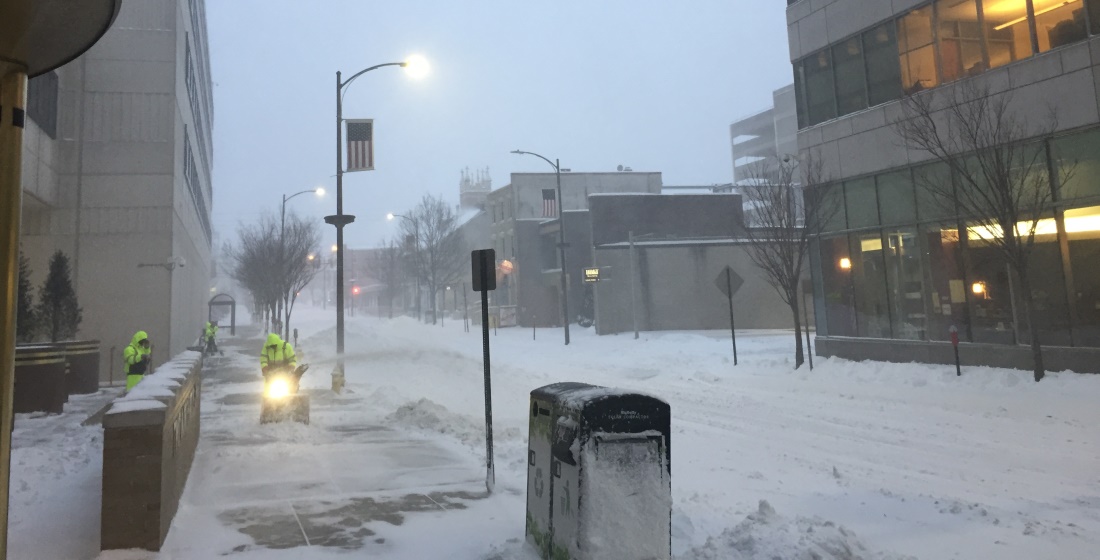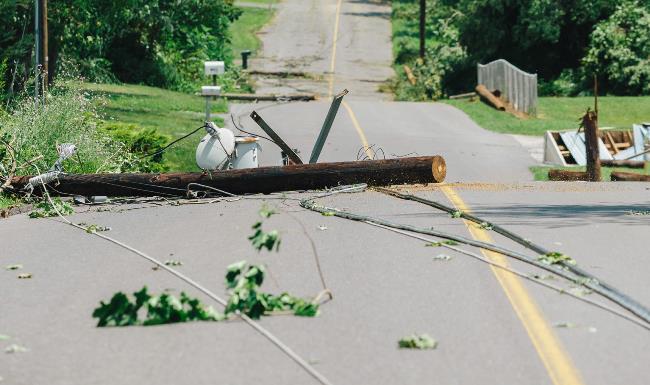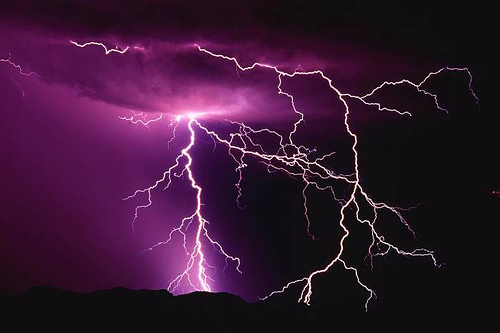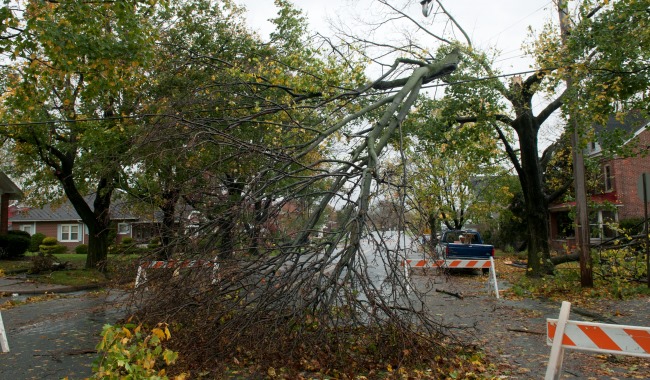
Mar 1, 2018 | Reliability
Updated at 11 a.m. Friday (3/2): Today’s nor’easter with its high winds is causing a lot of damage throughout our service area, and more bad weather is to come. There are many individual repair locations, so some outages may be prolonged. We urge customers to prepare for that possibility.
We don’t yet have restoration times for specific locations but will provide that info when we can.
Hundreds of PPL employees and contractors are working to fight the effects of this storm. We’ll work as quickly and safely as we can to restore power and will keep you informed as the storm develops.
In the meantime, please stay safe. Stay clear of downed lines and report them ASAP to 1-800-DIAL-PPL. And report any outages at 1-800-DIAL-PPL or www.pplelectric.com/outage.
Our investments in our network have significantly reduced storm-related outages, while also making our grid more resilient and secure. A few examples:
- Our innovative smart grid technology has restored power to more than 190,000 customers since it went live in early 2016. It has also reduced storm-related outages by 20 percent. The smart grid automatically senses a power outage and reroutes power around the damage, restoring service for many customers within minutes.
- There was a 76 percent reduction in lightning-related outages on transmission lines from 2012-17 because of investments in lightning protection.
- Tree-caused outages continue to decrease. Trees are the leading cause of storm-related outages. We clear trees along more than 10,000 miles of power lines each year, and we’ll continue this comprehensive work to keep reducing outages.
That said, severe weather — like 60-mph winds, ice storms, heavy snow or lightning — can still cause outages. Here are some storm tips to help you prepare and respond to any problems.
- Before the storm hits, make sure your cell phones and other personal devices are fully charged.
- Also, make sure your PPL Alerts are set up so you receive outage or other info when and how you want it. We’ll send you the latest updates by phone, email, text or all three. Setting your preferences is as simple as going to www.pplelectric.com/alerts. (You’ll need to have an online account with us.)
- Report any outages by calling 1-800-DIAL-PPL (342-5775) or by visiting www.pplelectric.com/outage. Don’t assume someone else has reported the outage.
- Stay away from any downed lines and always assume the line is still energized. Call us immediately at 1-800-DIAL-PPL to report the line and keep pets and kids away.
- If you have to run a generator, make sure you run it outdoors in a well-ventilated area — never indoors or in a garage.
- Use flashlights, not candles, to reduce fire risk.
More storm and outage safety and prep tips can be seen here.

Aug 15, 2016 | Safety and Security
Stronger poles and wires and more comprehensive tree clearing are making our power grid more resistant than ever to storms, but lines occasionally come down when the weather turns nasty.
Wires also can fall when poles are hit in traffic accidents.
The first thing to do about any downed power line is to stay away from that wire and anything touching it. According to the Electrical Safety Foundation International, the ground around power lines may be energized up to 35 feet away. That’s more than 10 yards on a football field.
You can’t tell if a wire is live, or energized, just by looking at it. Assume all downed lines are live, no matter how they appear. Receiving an electrical shock can be deadly.
Some other downed wire safety tips from ESFi include:
- Don’t try to move a downed power line or anything else in contact with it by using another object such as a broom or stick. Non-conductive materials like wood or cloth can conduct electricity if even slightly wet.
- Be careful not to touch or step in water near a downed power line.
- Do not drive over downed power lines.
- If your car comes in contact with a downed power line while you are inside, stay in the car. Honk your horn to summon help, but direct others to stay away from your car. If you must leave your car because it’s on fire, jump out of the vehicle with both feet together and avoid contact with both the car and the ground at the same time. Shuffle away from the car.

Jun 14, 2016 | Safety and Security
Mother Nature’s electrical fireworks can be deadly. Nearly 50 people are killed by lightning each year in the U.S. and hundreds more are severely injured.
Courtesy of the National Weather Service, check out a few lightning myths and facts to stay safe:
MYTH: If trapped outside during a lightning storm, lie flat on the ground.
FACT: Lying flat just increases your chance of getting hit by potentially deadly ground current. Keep moving toward a safe shelter.
MYTH: If there is no rain or clouds, you’re safe from lightning.
FACT: Lightning has a long reach. “Bolts from the blue” can strike 10-15 miles from a thunderstorm.
MYTH: A lightning victim is electrified and you risk electrocution if you touch them.
FACT: The body does not store electricity and it’s perfectly safe to give first aid. Don’t be afraid to come to their aid. You could save a victim’s life.
For more electrical safety tips, visit pplelectric.com/safety.

Aug 18, 2015 | Safety and Security
(Pictured above: A little bit of Hurricane Sandy’s storm damage, fall 2012.)
Hurricanes. They’re a drink in New Orleans, a college team in Miami, and a seasonal hazard all up and down the East Coast, especially starting this time of year.
The peak of activity for the Atlantic hurricane season usually takes place from mid-August to late October. These damaging storms don’t come this way too often, but when they do, they can cause a lot of problems.
September is National Preparedness Month, and that’s a worthy event. Still, you don’t have to wait until then to make sure you are ready for anything that might arise.
Take a look at our Project Envolve post for guidance on how to prepare a family plan that can help keep everyone safe and on the same page during a storm or other emergency.
As for us, we’re constantly monitoring the weather. If a serious storm threatens our service area, we’ll act well ahead of time to make repair crews and resources available to respond.
Take time to make a family emergency plan, prepare supplies and think about what you’d do if a major storm threatened your area. A little preparation today could make a big difference down the road.




